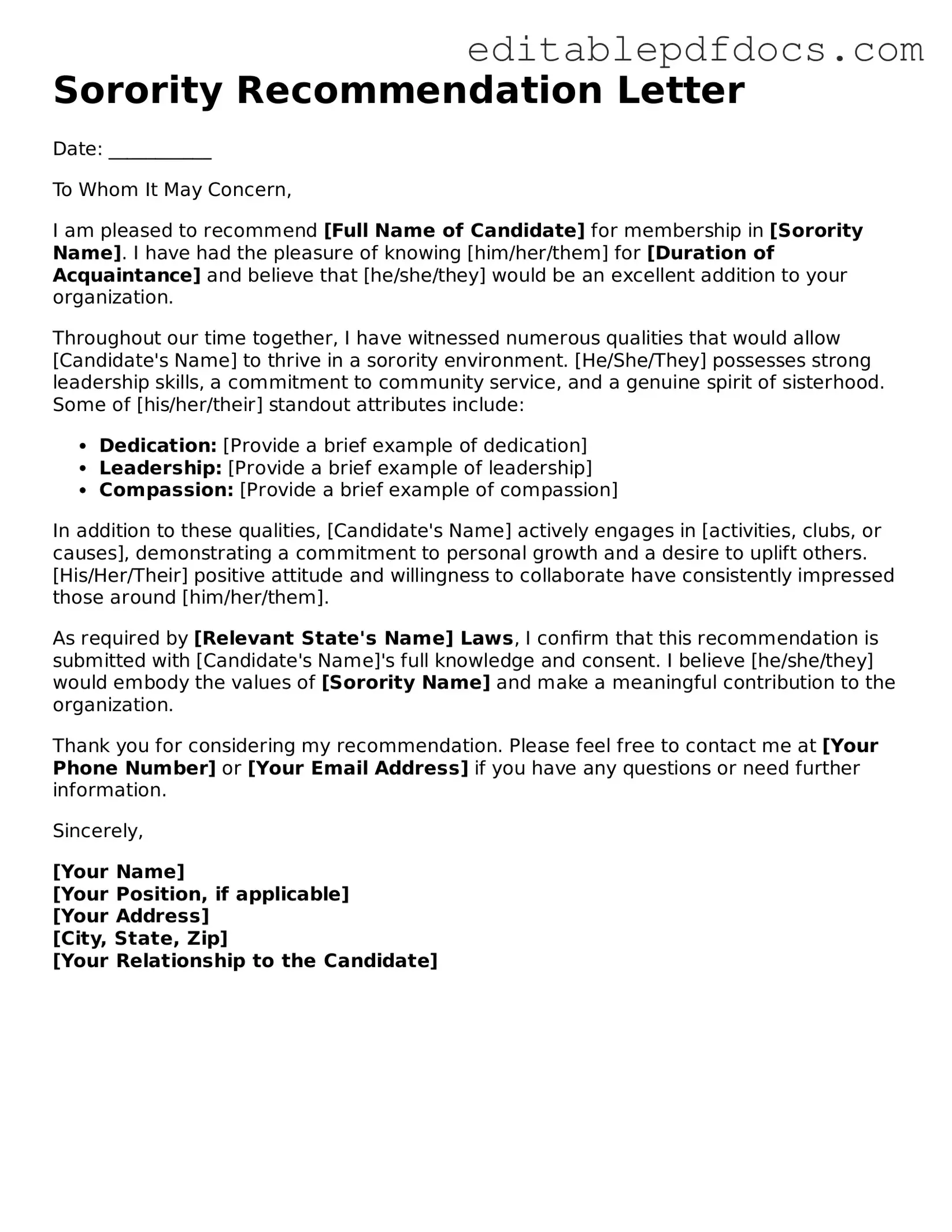When navigating the sorority recruitment process, one important element stands out: the Sorority Recommendation Letter form. This form serves as a vital tool for potential new members, often referred to as PNMs, as it helps them secure endorsements from alumnae of the sorority they wish to join. Typically, the recommendation letter outlines the candidate's qualifications, character, and involvement in extracurricular activities, painting a holistic picture of who they are. It is not just a formality; it can significantly influence a sorority's decision-making process. Additionally, the form usually requires specific details such as the applicant's academic achievements, leadership roles, and personal anecdotes that showcase their personality and values. While each sorority may have its own guidelines regarding the content and format of the recommendation letter, the overarching goal remains the same: to provide a compelling case for why a PNM would be an excellent fit for the sorority. Understanding the nuances of this form can empower candidates to approach their recruitment journey with confidence and clarity.
